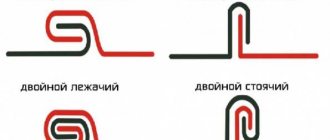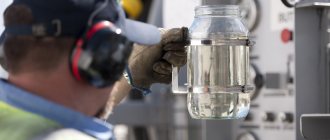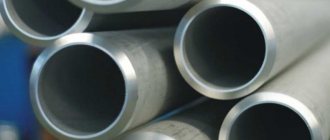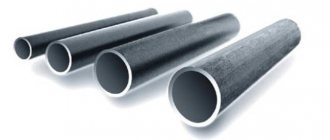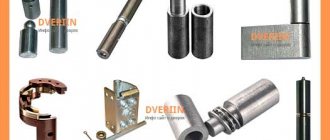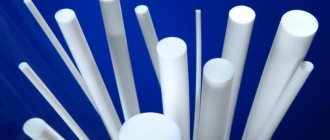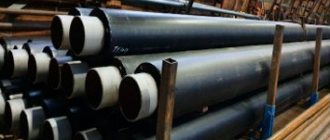A plug is a pipeline part with which the end holes of pipes are closed; its main role is used in the manufacture of various containers: boilers, apparatus, vessels.
Depending on the type, the fitting is installed in systems to completely or temporarily stop the movement of transported products. The pipe part allows you to preserve the pipe section for a long period or carry out periodic maintenance and repair work. It is also used when transporting pipes to avoid internal damage.
Operation of steel plugs is possible:
- at industrial enterprises;
- in public utilities;
- at home.
When to use stubs
For example, plugs can be used for sewer pipes. The element is installed in the following cases:
- to prevent debris and other foreign objects from entering the pipe. Most often, a plug is installed when wiring is done. If a shut-off valve can be installed on the water supply system, then plugs are placed on the sewer pipes;
- If part of the sewer system is dismantled, then a plug must be installed. After this, it will be possible to disassemble some parts of the system, without violating the integrity of the entire system;
- in some cases a pneumatic plug is installed. It is needed to eliminate accidents in various parts of the system of all types of communications. The plug can be installed for a gas pipe or for a water supply.
Dimensions
Dimensions also act as a sign by which the ranking of damping elements is carried out. Their range is quite diverse. However, all of them can still be divided into standard and non-standard options.
To purchase a standard version, you need to know the length, width, and cross-section. It is also necessary to indicate the parameters of the pipe wall.
In a situation where standard “jammers” are not suitable, you can choose an option with non-standard parameters.
Types of stubs
There are a large number of plugs used in plumbing today. It is worth highlighting the most common stubs:
- threaded This is the most common plug found in every home. They can be installed both on the water supply system and on gas pipes. Basically, threaded plugs are made of steel. In this case, the thread is made both external and internal. Typically, threaded plugs are installed on pipes with a diameter of no more than two inches. Please note that the installation of threaded plugs is carried out using a special linen or FUM winding. Linen winding is considered the most effective. It is not recommended to use sealant, as it will complicate the removal of the plug if necessary;
- flange plugs. They are used on pipes that are larger than two inches in diameter. A flange plug is a flange without a hole that is connected to a pipe by bolting. Rubber is used as a gasket. If hot water flows in the pipe, then paronite is used;
- spherical plugs. Such products are used in critical communications, where pressure can reach one hundred atmospheres;
- pneumatic plugs. They allow you to briefly limit the integrity of the system in certain areas. These plugs are made of rubber. When air is pumped into them, they expand.
Pneumatic Pipe Plug
Production methods
One of the main technological methods for producing plugs is the stamping method (hot, cold). This is a high-performance process that allows us to obtain high-quality blank parts of various shapes and sizes, which are modified to specified dimensions and surface smoothness using cutting methods (plasma, gas). This method allows you to minimize the appearance of voids, shrinkage cavities and other defects. In addition, parts obtained by this method are characterized by good strength characteristics and reliably ensure the tightness of the pipeline over a long period of use.
The second method of producing plugs is the TSESHL method (centrifugal electroslag casting), which also allows you to obtain a high-quality product. The disadvantages of products produced by the TsSEL method are the chemical and structural heterogeneity of the product over the volume of the casting, the possible presence of pores, air pockets, impurities in the composition of the material, etc.
When flanges are put into operation, multi-level quality control of the product is carried out, including: measuring geometric dimensions, determining the chemical composition and mechanical characteristics of steel, and studying the macro- and microstructure. After which the products are certified for compliance with the specified technical conditions.
Plastic pipe plugs
Plastic pipe plugs can be used in the sewer system or plumbing system. In each individual case, plastic plugs help solve certain problems. In general, a plug is used to seal a side hole in a pipe. It is clear that the pipeline can be welded or the section of the pipe that has to be closed with a plug can be completely removed.
However, plastic pipes are a material that allows you to change the architecture of the system at any time. For example, then you will need to install some kind of plumbing fixture that is powered by a pipe that currently has a plastic plug on it.
If the system does not have pressure, then the plug can be used as a window to access the network. For example, there may be plugs in the sewer riser through which the pipe can then be cleaned. In other cases, you will have to install plastic plugs for other purposes and in different ways.
Other uses [ edit | edit code ]
To keep pipes clean during transportation.
Buy cheaper! Discounts and promotions in our newsletter!
A pipe plug is a multifunctional device that plays a decorative role or serves as an important technical element of pipeline systems. This review will help you understand the features of plugs, the possibilities of their use and installation rules.
Installing a plug in a pressurized system
The system, which operates under pressure, is assembled from durable polypropylene pipes. Therefore, the plug must not only be airtight, but also strong enough.
Therefore, plastic plugs must be installed on threads or welded. In some cases, the plug is fixed with glue. But if the plug is installed by welding or glue, then disassembling the system will be almost impossible. At the same time, the threaded connection can be easily opened at any time.
If the plug is firmly attached, then the following operations must be performed:
- use diffusion welding. In this case, a special tool heats the inside of the plug and the outside of the pipe. Then the plug is pressed firmly onto the pipe;
- on glue. Glue is applied to the plug and pipe. Then the surfaces are connected and held for about half a minute.
This way, you get a fairly strong and airtight plug, but it will be impossible to remove it.
Tips for choosing
When searching for plugs on the market, you should pay attention not only to metal products - there are other interesting materials. The main requirement can be formulated as follows: the material of the selected plugs should not conflict with the pipes themselves.
A good option for blocking pipes are elliptical plugs. True, they are only suitable for installation for a long time in a pipeline that is not in use. This metal plug for water pipes is installed exclusively by welding. For the manufacture of these locking parts, different types of steel are used, but the requirements for all types of elliptical plugs are the same - they must operate at pressures up to 16 MPa and temperatures ranging from -70 to +450 degrees.
There is another type of closing elements for pipes - a compression fitting. This device is a type of crimp plugs, but differs from them in the presence of a split ring that allows you to close pipeline elements located in open space.
The main advantage of compression fittings is their very simple installation, which requires only a pair of adjustable wrenches. The lack of need for special equipment has allowed these types of locking elements to become quite popular. The most commonly used devices are diameters of 16, 20, 26 and 32 mm.
Using a compression fitting, you can achieve complete tightness of the structure without using welding or bolting. The design of the ferrules includes good materials, giving the finished elements a high level of vibration fatigue and the ability to withstand high pressure. In addition, compression fittings for steel pipes are varied enough that they can be installed several times.
The design of compression metal plugs includes the following elements:
- Frame;
- Sealing ring;
- Split ferrule;
- Compression nut.
The fitting is designed quite simply, but at the same time demonstrates high performance characteristics.
What else is highlighted?
These were the main options, but there are some additional ones. To make it convenient to transport cargo in the form of pipes, there are special transport plugs. It is important to create safety conditions when moving materials. Plastic is used to make these plugs. But such a plug for a sewer pipe is no longer suitable.
Another option is end ones. Various materials are suitable for the implementation of such a part. Not every pipeline is operated after installation. To avoid contamination, such a part becomes indispensable. These can be metal pipe plugs, but most often they try to make them cost-effective, since there is no heavy load. Use only for its intended purpose, otherwise it will not be effective.
Types of structures
The manufacturer makes various designs. These include:
- Threaded. Most often it is done for the pipe itself. This is a metal element, it is difficult to find this on plastic. To fix it on the pipe, you do not need to have any specific skills, and the fixation will be maximum and practical. There is only one rule - this is the accompanying thread on the pipe itself.
- Pneumatic system. For installation you will need an air pump. When there is flow, the shape of the plug becomes larger. It is put on the pipe, and then tightly fixed on it. This reliability condition is required for gases or liquids. Sometimes it is placed on a water supply to temporarily stop the flow.
- Elliptical option. This requires an auxiliary component - a welding machine. Sometimes fixed as a permanent part on a faulty pipeline.
- Flange. This option is most suitable for metal parts. Fixation occurs due to the fastening element - bolt, rivet. Special entrances have been made for them. The flange is convenient to use because it is easy to install and remove.
Thanks to this distribution, it is easier to make your choice. Because everyone is trying to create a reliable design and put liquid and gas through the pipe without loss.
Normative base
The production of various types of plugs is regulated by the following documents:
- flange plugs are produced according to ATK 24.200.02-90 (OST 26-11-07-85), GOST 12836-67, OST 34-10-428-90, OST 34-42-833-86, etc.
- wafer type are manufactured according to ATK 26-18-5-93, T-MM-25-01-06, etc.
- flat plugs (including those with ribs) are made according to OST 34 10.758-97, OST 34 10.759-97, OST 34-42-666-84, etc.
- the production of elliptical plugs is regulated by GOST 17379-2001, etc.


